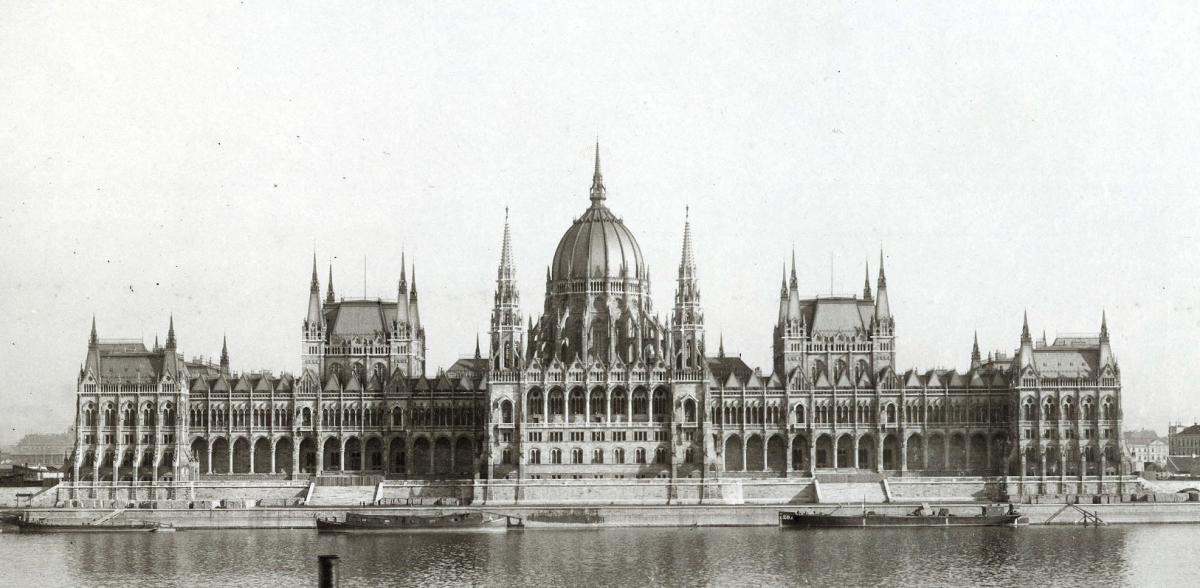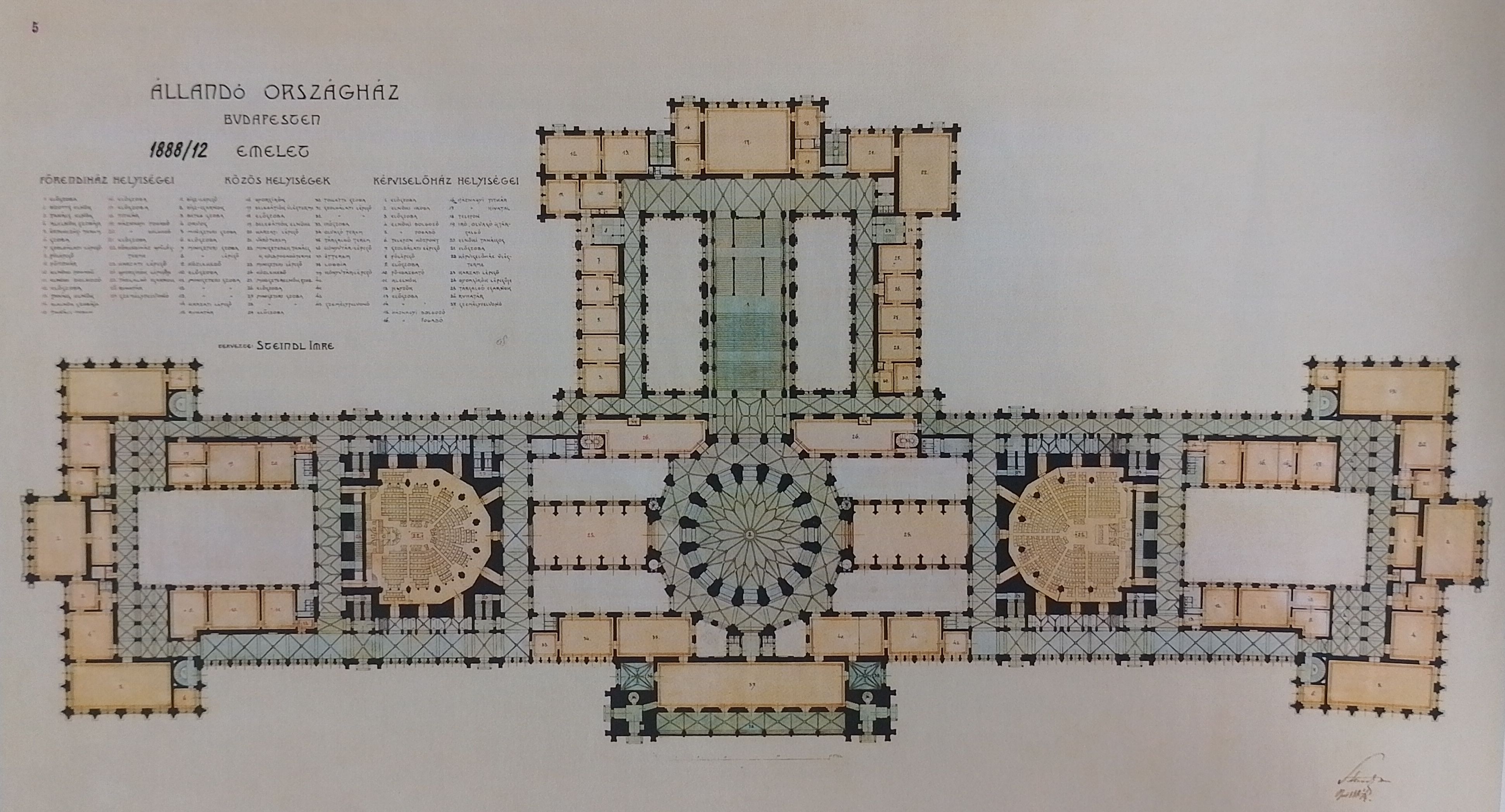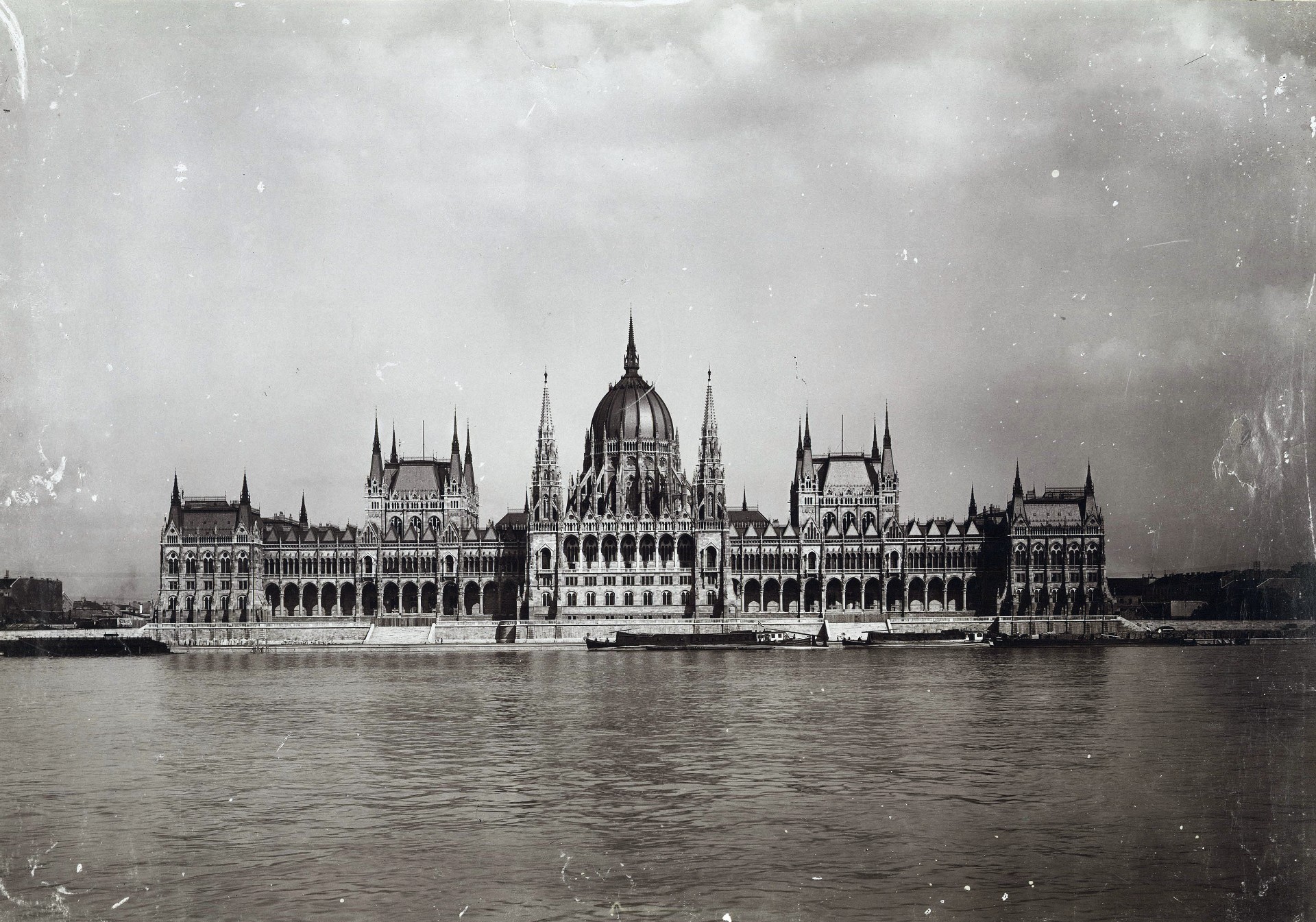The House of Parliament was completed 120 years ago, and its plans are 140 years old. During this time, even with the most careful maintenance - which fortunately the house receives continuously - some of its systems are physically worn out. It is not possible to "get deep into" these during daily operations, Tamás Wachsler, CEO of Steindl Imre Program Nonprofit PLC (SIP PLC), which is responsible for the project, told MTI.

The Parliament around 1900 (Source: Fortepan/Budapest Archives, Reference Nr.: HU.BFL.XV.19.d.1.08.106)
On the other hand, the technologies of 140 years ago, including the heating system of the Parliament, and the steam-mediated district heating, which was considered revolutionary in its time, have now become outdated. There are countless heating and cooling systems that use renewable energies, but the building is not currently suitable for accommodating them, he noted.
"If we had started this investment, which we are only thinking about now, ten years ago, the Parliament building's gas bill and electricity bill would probably be significantly lower by now," he said. As he emphasised: "Aesthetically, the house is in perfect order, the facade renovation has been completed, they are constantly taking care of it, and I even dare to say that it is more beautiful than at any time in the last hundred years".

The House of Parliament (Photo: Balázs Both/pestbuda.hu)
According to him, several interventions may still be necessary that cannot be carried out while the house is operating, but the government decision published on 2 November now allows them to be reconsidered. The project launched following the decision will have four stages; in the current, first phase, the investment plan must be prepared by 31 May.
"We inspect the house, in which we count on the help and experience of the operators, and examine which systems and elements are outdated, old, in need of repair, modernisation or replacement. Based on the investigations, we will prepare a proposal for the government and the Office of the National Assembly, indicating what interventions we think are necessary, and we will also provide a rough cost estimate," he said.
"Even in the investment plan, some basic questions must be asked of political decision-makers. If, for example, we make a proposal for the implementation of a technical content that can meaningfully be implemented only by temporarily moving the National Assembly, then we describe what the conditions are and what the solution options are," he emphasised.

Ground plan of the first floor of the Parliament (Source: József Sisa: Construction and art of the House of Parliament, 2020)
Tamás Wachsler added that if decisions of this type are made, they should be made during the current parliamentary term. He added that, based on the investment plan, a decision can be made about what kind of interventions can be implemented, after which the planning program, which already contains concrete details, will be prepared in the second stage. In parallel with the second phase, the tests aimed at gaining a deeper understanding of the current technical content of the house, which may not have been completed in recent years, are to be carried out. This phase concludes with a conditional design tender.
The third phase – if the government gives the green light to start it – includes the preparation of construction plans and the necessary authorisation, and ends with the also conditional construction tender. The government can decide on the project's actual start after knowing the specific offers. The contraction tender and the physical preparations for the possible move-out should be completed in these four years, and then the construction can be realized in the next cycle - the expert argued, stressing that it is therefore quite certain that no concrete work will begin in the Parliament until 2026.
Responding to political criticism that the project was untimely in times of crisis, Tamás Wachsler highlighted: it is no coincidence that many houses across the country are being renovated right now precisely because utility costs have risen and they want to make the buildings suitable for the use of renewable energy sources. The House of Parliament is currently completely ineligible for this. Not least, it is necessary to rethink the modernisation of the building in order to increase the energy independence of the Parliament building, he stressed.
According to him, the investment plan must also clarify other issues, for example, the conditions for visiting the house during the investment must be reviewed. "This is not a question that can be answered with a yes or a no: it is possible that the investment interferes with the tourist functions of the house in certain periods and certain parts, but not elsewhere. Flexibility is possible and expected.”

The Parliament around 1900 (Photo: Fortepan/Budapest Archives, Reference Nr.: HU.BFL.XV.19.d.1.08.109)
He reminded, that the House of Parliament is also the place where the Holy Crown and coronation insignia are kept. "Our mandate is that, if necessary, we will consider the placement of the crown for the duration of the project. The investment plan will have a point about whether we recommend the temporary relocation of the crown based on the technical changes we propose. If so, then we also have to think about where it can be placed. We do not have to decide on this, but it is important to think about it," he said.
He also drew attention to the fact that not only in Hungary but in many places around the world, legislative buildings were erected in the second half of the 19th century and the first quarter of the 20th century and several of these parliaments are currently undergoing renovations. For example, representatives are currently moving back into the Vienna parliament building at the end of a multi-year renovation, in Canada the legislature is currently meeting in temporary locations due to the building's reconstruction, and in London, investment and relocation preparations are underway with great force. Modernising the Parliament and making it more energy independent is therefore not a unique idea, said Tamás Wachsler.
Source: MTI
Cover photo: The Parliament building (Photo: Balázs Both/pestbuda.hu)






































Hozzászólások
Log in or register to comment!
Login Registration